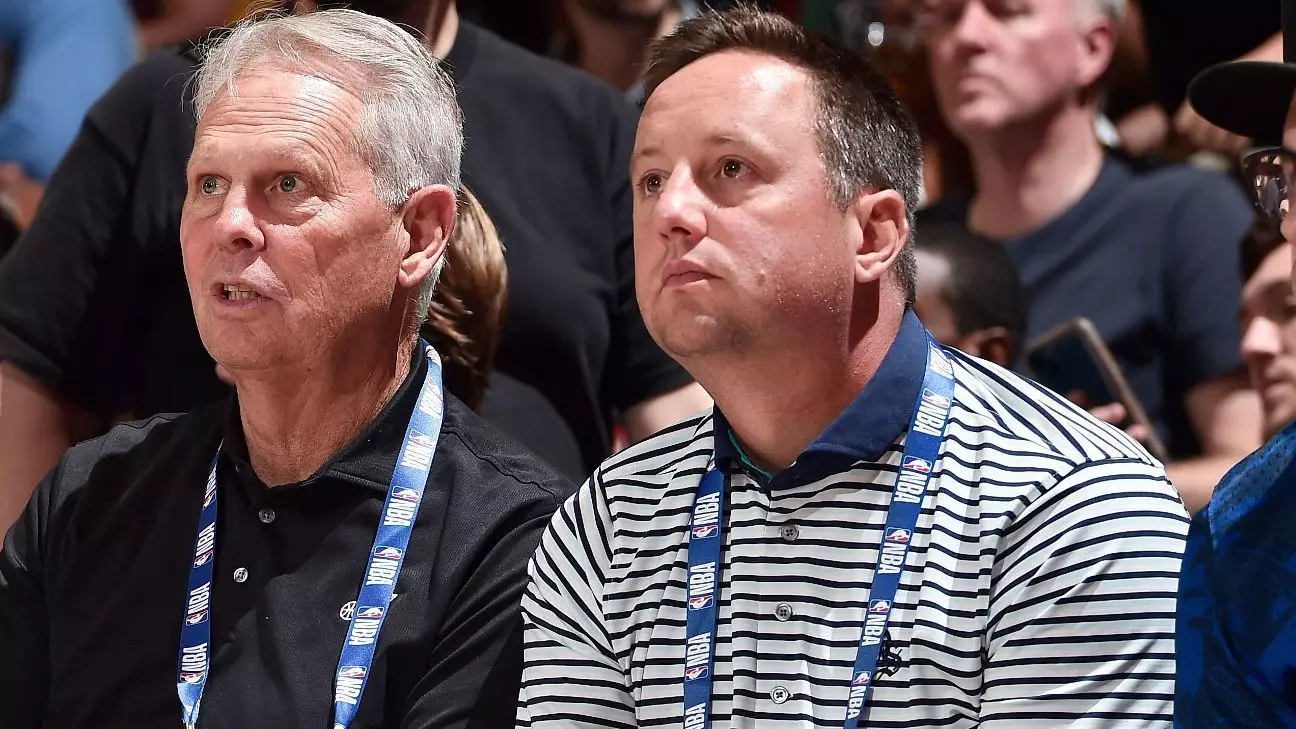The recent decision by the Utah Jazz to appoint Austin Ainge as the president of basketball operations is not just another executive transition; it’s a significant strategic move layered with familial ties and professional evolution. Austin, who leaves a lengthy tenure with the Boston Celtics to join his father, Danny Ainge, at the Jazz, represents a pivotal bridge between a seasoned, successful basketball philosophy and the tumultuous rebuilding phase facing Utah. At just 43, he carries with him over 17 years of intense basketball training under the tutelage of some of the brightest minds in the sport, honed through various roles from coaching in the G League to an influential presence in Boston’s front office.
Ryan Smith, the team’s governor, has emphasized that this partnership with general manager Justin Zanik is expected to create a dynamic front office, enhancing their respective “separate and unique skill sets.” It suggests a strategic tapestry where experience fuses with innovative thought, sculpting an environment equipped to tackle the hurdles ahead. This dual-leadership model showcases an organizational strategy that embraces both established methodologies and fresh perspectives.
Insight from Proven Success
In the high-stakes realm of the NBA, pedigree matters—and Austin is steeped in it. His accomplishments with the Celtics are not just reflected in their impressive playoff performances but also in the development of a strong organizational culture. While he sat behind the scenes, his role in talent evaluation, player development, and team chemistry has undeniably shaped Boston’s success over the years. This is a man who has learned to navigate the complexities of the league, embedding himself within its core philosophies.
However, while the Jazz are gaining an experienced executive, they are also inheriting a basketball roster that is facing its most challenging rehabilitation yet. After a season characterized by unprecedented lows, including the franchise’s worst record ever, the critical question becomes whether Austin can replicate the winning culture he fostered in Boston or if he will falter under the pressures of a complete organizational overhaul.
Expectations and Challenges Ahead
One cannot dismiss the contrasting landscape that Austin Ainge is stepping into. The Jazz’s recent history is punctuated by turmoil and inconsistency, factors that led to a significant reset. Although there are bright spots—such as the presence of All-Star Lauri Markkanen and a young core—the team’s foundation remains tenuous. With only 17 total wins this past season, expectations are teetering on the edge of despair.
Austin’s transition involves a twofold pressure: to refine and bolster a disheartened roster while also instilling his vision of success, which derives from years of observing and contributing to a winning culture. His burden, intrinsically tied to historical performance benchmarks, challenges him to outperform his predecessors in Utah, stepping out from the considerable shadow cast by his father and the Celtics’ glory days.
One of the notable shifts that Ainge must navigate is assembling the right team to support his vision. Acquiring talent through the draft, as evidenced by their recent lottery misfortunes, will be crucial. The Jazz’s falling from what was anticipated to be a high draft pick to fifth place creates an immediate dent in Austin’s execution plan, emphasizing the volatility inherent in the player acquisition strategy.
Building for the Future
Austin Ainge’s lengthy career has provided him with an acute understanding of basketball dynamics—especially regarding player chemistry and organizational health. His assertion that he aims to build something special in Utah signifies a calculating yet vibrant perspective toward fostering success. The excitement in his words resonates strongly with Jazz fans who have yearned for a revival since their last competitive playoff runs.
This endeavor goes beyond mere roster additions; it is about establishing a winning ethos that galvanizes fans and fosters community engagement. By leveraging his experiences and reshaping a beleaguered roster, Ainge’s role becomes not just a position of authority, but a transformative journey that echoes with fan sentiment and city pride.
As he prepares to undertake this monumental task, the hopes of a passionate fan base rest firmly on his shoulders. The question remains: will Austin Ainge’s innovative strategies result in the revitalization of the Utah Jazz? If his tenure with the Celtics is any indication, the future may hold more than just promise—it could herald a renaissance in Jazz basketball.


Leave a Reply